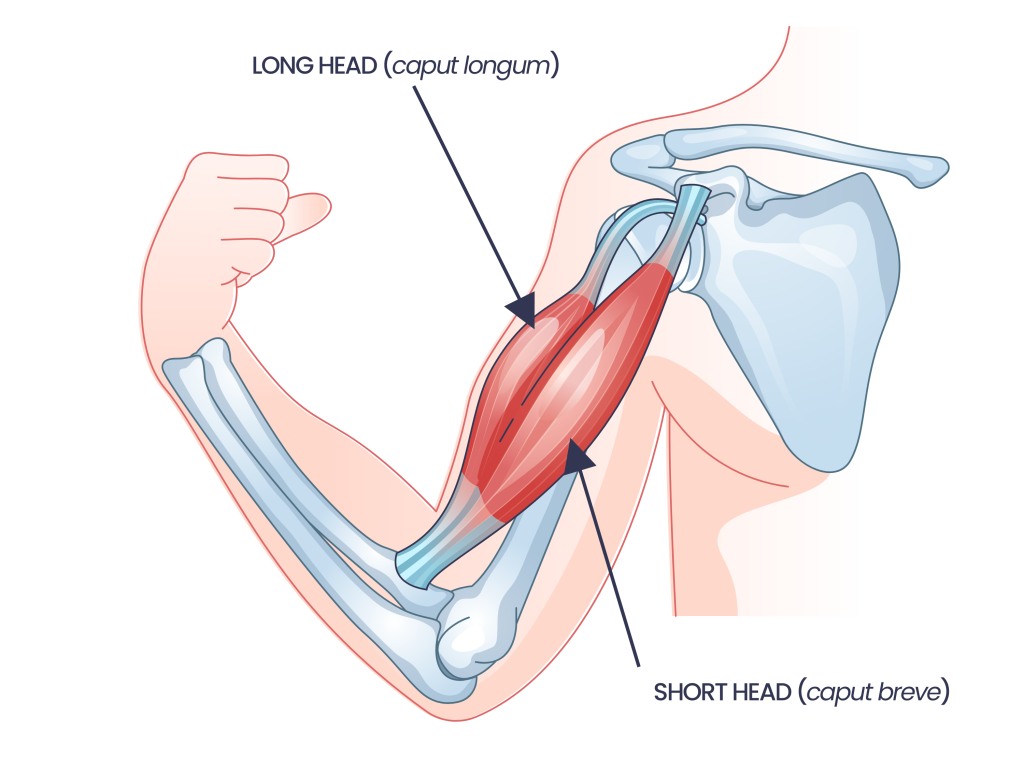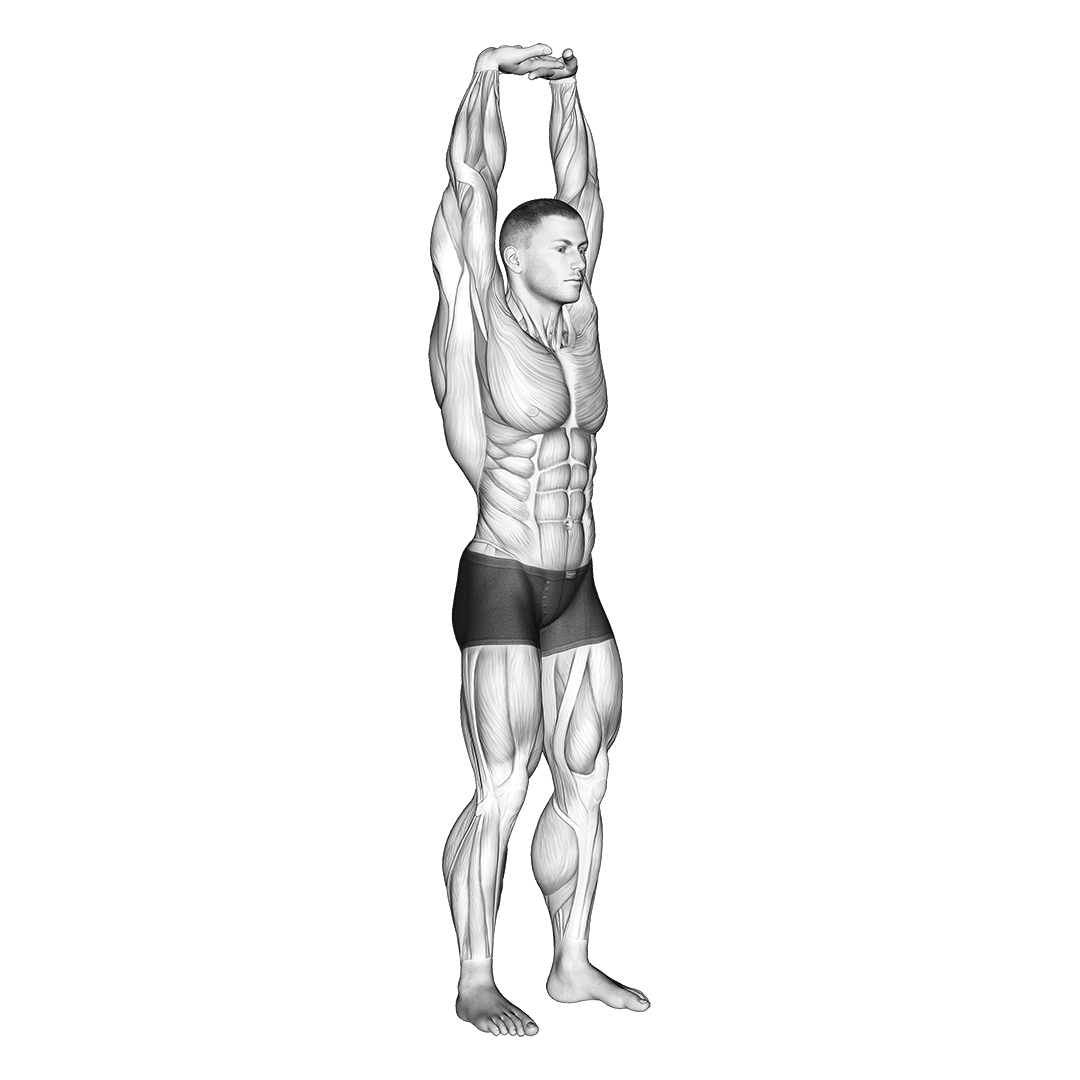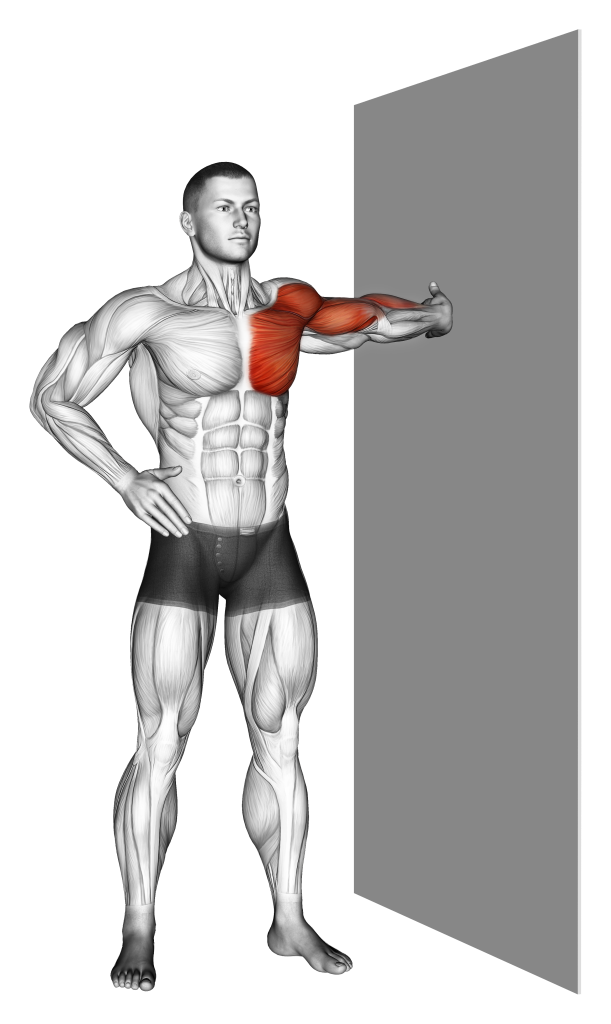4 Best Bicep Stretches (with Pictures!)
An often forgotten component of working out is stretching properly - and an even further forgotten component is stretching the biceps.
A mistake, as the biceps are likely to be worked to a significant amount of volume in most training programs.
Fortunately, stretching the biceps is quite easy, and can be done with only one or two inclusions into your warm-up routine. With the right mobility work, lifters will see a significant improvement in their biceps’s strength output, flexibility and even benefit from a reduced risk of injury throughout their workout.
What is the Bicep, and Why is Stretching it Important?
The biceps brachii is a two-headed skeletal muscle group located on the anterior section of the humerus or upper-arm bone.
It is largely responsible for elbow flexion and stabilization of movements involving the arms, and is a favorite among bodybuilders due to its impressive capacity for hypertrophy.

Why is Stretching the Biceps Important?
As one may guess, failing to stretch the biceps can easily lead to injuries and instability of the upper arm - but furthermore, having tight or tense biceps can also cause elbow flexion to be affected, potentially reducing performance in exercises like the pull-up or row.
Benefits of Stretching the Biceps
As it turns out, stretching does more than just limber up your muscles. With dynamic movements like the overhead biceps stretch or wall stretch, a significant improvement may be seen in not only the effective range of motion of the biceps, but also blood flow to the area, and actual force output.
Reduced Risk of Injury
Quite a number of injuries in the gym are a result of poor warm-up and mobility drills, and are largely preventable simply by ensuring that all muscles are adequately activated before even beginning the workout.
One particularly critical area is the biceps - due to the nature of exercises like curls or rows, the biceps can sustain a significant amount of tension for long periods of time, leading to tears in the connective or skeletal tissue if they are not sufficiently mobilized beforehand.
As such, performing a basic aerobic warm-up alongside mobility work like stretching can greatly reduce the risk of the biceps becoming injured during exercise.
Greater Muscular Performance
Dynamic stretching causes the circulatory system to shuttle more blood to the muscles being activated - providing additional nutrients and oxygen to fuel their performance. In turn, athletes will see a marked improvement in the general performance of their muscles during actual exercise.
In the case of the biceps, this means comparatively greater endurance and strength, allowing for more weight to be moved at a larger amount of volume.
Increased Flexibility
With repeated performance, mobility drills targeting the biceps brachii and its related connective tissues can cause the body to adapt - leading to greater long-term flexibility and ultimately a wider range of motion overall.
Not only will greater soft-tissue flexibility allow for wider movements to be taken, but it will also improve stability throughout the arm’s range of motion, as skeletal muscles initiate a “stretch reflex” when nearing the end of their range of motion.
Improved Mind-Muscle Connection
Performing a slow mobility drill can help exercisers familiarize themselves with properly contracting their biceps, allowing for greater control and actual awareness of the muscle itself (hence "mind-muscle" connection).
Though somewhat abstract, practicing conscious control over the biceps is one of the most important aspects of achieving proper hypertrophy, as isolation exercises like the dumbbell curl or hammer curl require the lifter to focus on maximizing direct recruitment of the muscle as much as possible.
Bicep Stretches
1. Behind-the-Back Biceps Stretch
Also known as the standing biceps stretch, the behind-the-back biceps stretch is excellent for activating the long or outer head of the biceps brachii while also dynamically stretching other parts of the upper torso to some extent.

The behind-the-back biceps stretch features a rather short range of motion, and as such will need to be repeated several times within a short frame of time in order to maintain its dynamic nature.
Areas Stretched
The behind-the-back biceps stretch will affect not only the biceps, but also the clavicles, pectoral muscles, shoulder joints and deltoid muscles.
How-to:
Clasping the hands together behind the waist, the exerciser will then extend their elbows backwards, turning their palms outwards as they do so. The arms will automatically raise upwards to account for the elbows reaching terminal extension.
Once a sufficiently intense “stretch” is felt in the biceps, the exerciser will allow their elbows to bend once more, returning the hands to their original position at the start of the stretch. Repeat as many times as necessary.
2. Overhead Extension Biceps Stretch
Perhaps the most common type of dynamic biceps stretch, the overhead extension biceps stretch is excellent for preparing the body for a pull-day workout. This particular stretch is also known as the vertical bicep stretch, or the vertical arm stretch.

For the best results, the exercise should be performed in a standing position, with as sweeping and slow of a motion as possible.
Areas Stretched
The overhead extension biceps stretch will target the latissimus dorsi, biceps, and parts of the forearms.
How-to:
Keeping the torso upright, the exerciser will interlace their fingers at their waist.
Extending their arms forward and upwards, the exerciser will rotate at the shoulders and draw the hands over their head, stopping once the elbows are completely extended as the arms are parallel to the sides of the head; Ideally, the palms should be pointed immediately upwards.
Holding this position for a count, the exerciser will then reverse the motion to complete the stretch. They may then repeat the stretch as many times as necessary.
3. Standing Wall Biceps Stretch
Ideal for push-day workouts or for individuals who have trouble performing behind-the-back stretches; the standing wall biceps stretch will require a sufficiently sturdy object and enough space to stand at arms length from said object.

Areas Stretched
The wall biceps stretch will activate muscles like the pectorals, deltoids and biceps - as well as help dynamically stretch joints located in the elbows, wrists and shoulders.
How-to:
Standing facing sideways to the wall (or other stable object), the exerciser will place their palm flat against the object, allowing the elbows to bend slightly.
Then, rotating the body with the feet, the exerciser will turn away from the wall as their hand remains pressed to it, allowing the elbow to extend as the shoulder travels further away.
Once a stretching sensation is felt in the biceps and chest, the exerciser may rotate back to their original position, thereby completing the movement.
4. Seated Behind-the-Back Biceps Stretch
Similar to the standing behind-the-back biceps stretch, the seated variation allows for multiple anchor points and a relatively more stable mobility drill than its standing counterpart.
Just as is the case with other behind-the-back stretches, the seated variation is especially useful for preparing the upper body for a push-day workout, as it will target the same muscles and joints that will be utilized later in the training session.
Areas Stretched
The seated behind-the-back biceps stretch targets the muscles of the pectorals, deltoids and biceps - while also stretching joints located in the shoulders and wrists.
How-to:
Taking a seat on a yoga mat or similarly low-friction surface, the exerciser will plant both their palms behind their back at a distance that allows for near-full elbow extension, thereby maintaining tension in the biceps.
Then, slowly sliding forward along the ground, the exerciser will keep their palms firmly in place until they experience a stretching sensation in the biceps and chest.
Holding this position for a count, they will then reverse the motion to complete the repetition.
Frequently Asked Questions (FAQ)
How Do You Relieve Tight Biceps?
All tight skeletal muscles may be alleviated with proper mobility work, massage and sufficient rest.
For the biceps in particular, this means performing dynamic stretches like the bicep wall stretch and the behind-the-back biceps stretch, as well as performing manual manipulation of the tissue through directed massage.
Keep in mind that the sensation of “tightness” in the biceps may be a sign of overtraining and injury, and it is generally a good idea to avoid further strain if the symptoms are intense or painful.
Are There Exercises for Bicep Tendonitis?
Yes - a major part of tendonitis rehabilitation will involve performing low-impact exercises to reinforce the connective tissues affected.
However, the sort of exercises used in biceps tendonitis rehabilitation can vary widely depending on the severity of the condition, and it is safe to say that consulting a medical professional is a far better choice than attempting to rehabilitate the injury yourself.
Can the Biceps be Stretched After a Workout?
Yes - though not quite in the same manner or for the same goals as stretches done before a workout. Stretching the biceps after a workout is done to release tension and aid in blood flow to the muscle.
These stretches are often of a static nature, as opposed to the dynamic stretches used at the start of a workout. The most common post-workout bicep stretches are; static doorway bicep stretches, static wall bicep stretches and the “wring the towel” stretch.
In Conclusion
Even if you have included one or two of these bicep stretches in your pre-workout plan, remember that mobility work is only a small part of a proper warm-up routine.
Combine your dynamic stretches with a baseline aerobic exercise, as well as some (unloaded) preparatory sets of whatever major exercises are included later in the training session.
With a complete warm-up routine, not only will the risk of injury be greatly reduced, but a significant improvement in performance will be immediately noticeable as well.
References
1. Page P. Current concepts in muscle stretching for exercise and rehabilitation. Int J Sports Phys Ther. 2012 Feb;7(1):109-19. PMID: 22319684; PMCID: PMC3273886.
2. EVETOVICH, TAMMY K.; NAUMAN, NATALIE J.; CONLEY, DONOVAN S.; TODD, JAY B.. Effect of Static Stretching of the Biceps Brachii on Torque, Electromyography, and Mechanomyography During Concentric Isokinetic Muscle Actions. Journal of Strength and Conditioning Research 17(3):p 484-488, August 2003.
